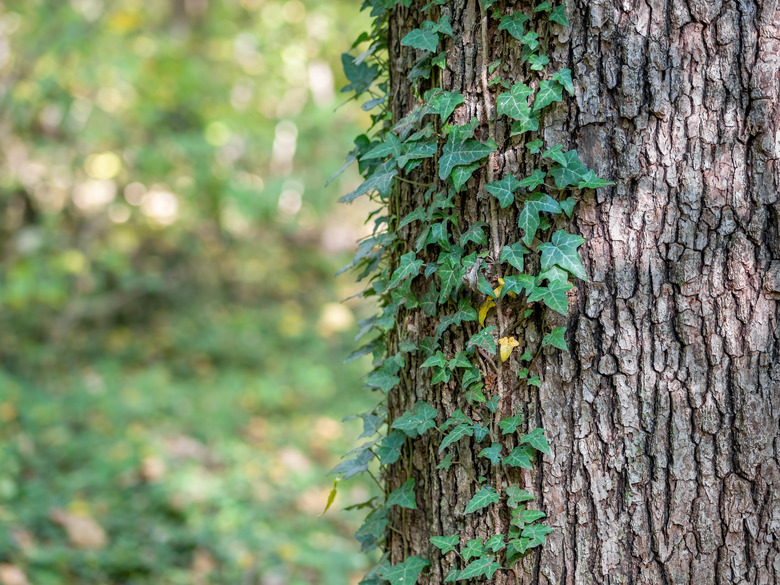How To Kill A Vine Root System
The right vine planted in the right place can bring beautiful appeal to a landscape. However, some vines are invasive and, if uncontrolled, can strangle trees and quickly take over desirable plantings. Killing an invasive, overgrown vine and its root system is possible but will take persistence, patience, and work.
Characteristics of Common Nuisance Vines
There are a number of different types of vines with the ability to quickly take over trees, shrubs, and entire areas. Some types require constant attention to minimize their growth so they don't invade areas where they aren't wanted. When left unchecked, some vines can girdle trees and cover a plant's canopy, blocking out needed air and sunlight and resulting in the death of the plant or tree.
Although a variety of vines are considered problem invasives, several are common culprits. For example, laurel greenbriar (Smilax laurifolia, USDA zones 7 to 10) tolerates a wide range of light and soil conditions, producing evergreen growth. The vine is covered in waxy green leaves with thorny stems and when its growth is unchecked, it can cover the entire canopy of smaller trees and kill them.
Another example is oriental bittersweet (Celastrus orbiculatus, USDA zones 5 to 8), which is considered a noxious weed in some Midwestern states. It thrives in a variety of light and soil conditions but when grown in leaner soils, its growth is somewhat restricted. The twining vine is covered in 2- to 5-inch circular leaves, producing clusters of greenish-white blooms in late spring to early summer, followed by small fruits ripening to yellow and then splitting open to reveal scarlet berries. The vine can strangle and girdle trees, killing them.
Managing Vines Through Mechanical Means
If you only have a few seedling vines popping up in your landscape, you can pull or dig them out of the ground, being sure to retrieve the root system. Leaving the root system in the ground means the plant will resprout. If you are dealing with smaller, established vines, you can continually mow them over. Eventually, the root system will die as it depletes itself trying to produce new growth.
If you decide to cut the vine off at ground level due to its size and it's growing up through the canopy of a tree, don't try to pull the cut portion down. Yanking on the vine and attempting to pull it down from the tree can end up breaking branches and inflicting more damage. The cut sections of vines will eventually turn brown and die and release their grip on the tree.
Managing Vines With Herbicides
If you're dealing with well-established vines with wide stems and big root systems, digging or cutting it out may be practically impossible. Instead, you can kill the entire vine along with its root system by treating it with a herbicide.
Depending on the size of the vine, you can use loppers or hand clippers to cut the vine off close to the ground. Immediately after cutting, treat the raw cut area with a full-strength application of an herbicide like glyphosate or triclopyr, by either painting or spraying the herbicide on the targeted area. Use caution so you don't accidentally get the herbicide on any desirable plants. It may take several applications of the herbicide to completely kill the vine, so keep an eye on it and reapply after a couple of weeks if new growth appears.
Always read the label before using any herbicide, and apply on a windless, sunny day with no rain in the forecast. Keep children and pets out of the area until the product completely dries. Protect yourself so none of the herbicide comes into contact with your skin by wearing safety eyewear, long sleeves, long pants, and closed-toe shoes. Wash your hands after applying and put on a fresh set of clothing.
